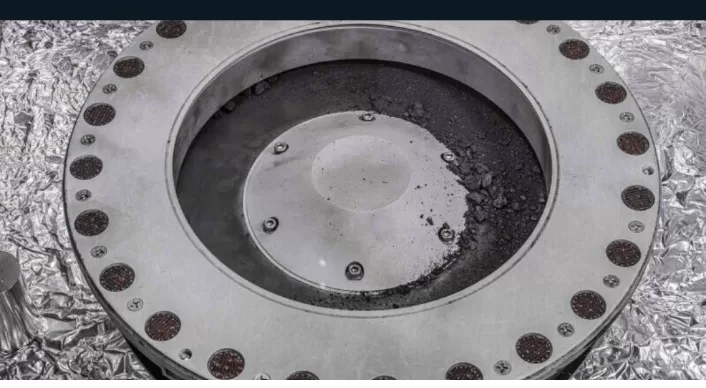In a groundbreaking revelation, NASA unveiled on Wednesday that a sample gathered from the ancient asteroid Bennu, which dates back a staggering 4.5 billion years, contains a wealth of both water and carbon. This discovery presents compelling evidence in support of the theory that life on Earth may have originated from extraterrestrial sources.
This remarkable achievement is the culmination of a seven-year odyssey as part of the OSIRIS-REx mission. The mission recently concluded by safely depositing its invaluable payload in the Utah desert for meticulous scientific examination.
At a press event hosted at the Johnson Space Center in Houston, NASA Administrator Bill Nelson heralded this achievement, emphasizing the historical significance of this moment. The first glimpses of the collected material, consisting of black dust and pebbles, were unveiled to the world.
Carbon, a fundamental element for life as we know it, comprised nearly five percent of the sample’s total weight, existing in both organic and mineral forms. The water, a key ingredient for life, was intricately locked within the crystalline structure of clay minerals, unveiling an exciting possibility about the Earth’s history.
Scientists postulate that the presence of oceans, lakes, and rivers on our planet may be attributed to ancient impacts from water-bearing asteroids some 4 to 4.5 billion years ago, rendering Earth habitable. Carbon, the cornerstone of life on Earth, forms the foundational bonds necessary for the creation of proteins, enzymes, and the fundamental genetic codes of DNA and RNA.
These groundbreaking findings emerged through an initial analysis employing advanced techniques such as scanning electron microscopy and X-ray computed tomography. Daniel Glavin, a dedicated scientist, expressed enthusiasm, deeming this material an “astrobiologist’s dream.” The sample will be shared with laboratories worldwide for further, in-depth research.
While OSIRIS-REx was not the pioneer in rendezvousing with an asteroid to retrieve samples, it stands out as the victor with an estimated 250 grams (equivalent to half a pound) of precious material, significantly surpassing Japan’s successful missions in 2010 and 2020, which yielded only 5.4 grams.
Bennu, named after an ancient Egyptian deity, represents a “primordial artifact preserved in the vacuum of space,” making it an alluring subject for scientific investigation. Its orbital proximity to Earth facilitated this mission, avoiding the complexities of traveling to the distant Asteroid Belt located between Mars and Jupiter.
Apart from the scientific insights gained, comprehending Bennu’s composition could be pivotal for potential planetary defense scenarios. Although there’s no imminent threat of Bennu colliding with Earth through the mid-2100s, NASA indicates a rising risk, approximately 1 in 1,750, between then and the year 2300.
Detailed data collected by the OSIRIS-REx spacecraft has exposed the asteroid’s surface as exceptionally porous. It is so loosely packed with particles that, were a person to set foot on it, they might sink in, akin to a pit of plastic balls in children’s play areas.
The focus of researchers, thus far, has centered on the examination of the supplemental particles located atop the sample collection mechanism. A more comprehensive inspection of the remaining sample will be undertaken in the near future.
An unexpected challenge arose during the mission in October 2020 when nitrogen gas was employed to collect material from Bennu. A sealing flap meant to secure the sample became wedged open, permitting some of the material to spill into an alternate compartment.







